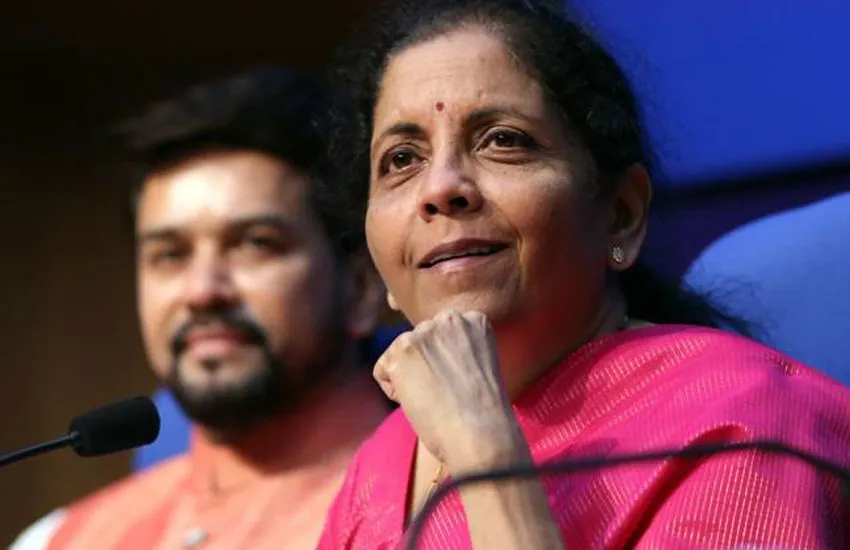-
CENTRES
Progammes & Centres
Location

Finance Minister Nirmala Sitharaman’s FY-2020-21 Budget Speech appears to hit all the right notes on emerging technologies: It acknowledges the importance of developing capacity in data analytics, AI, robotics, biotechnologies and quantum computing. It proposes government initiatives for catalysing entrepreneurship, skilling and growth. However, India’s tech challenge is more nuanced, and more government is not the answer to all its problems.
India risks doing the same in emerging technologies. Within the AI sector, India has emerged as a data labelling behemoth: home-born platforms like iMerit and Playment cater to an extensive list of international clients in South Korea, United States, Germany, China and more. Data labelling, like BPO is a crucial feeder industry: estimates suggest that the market for data labelling services will grow to $5 billion by 2023. However it is a small slice of potential AI-led growth: the global market for AI applications will touch $190.61 billion in 2025.
2. The gaps in India’s education and skilling systems are laid bare in the realm of emerging technologies
The promise of emerging technologies is combined with a second exigent concern in the minds of Indian policy thinkers going into the next couple of decades: managing India’s demographic dividend slated to end in 2055. In line with this, the Budget correctly prioritises education and skilling as one of the three pillars of “Aspirational India''. It presents a good statement of the problem: the need to move beyond brick and mortar schools and to build practical skills through apprenticeships.
Conspicuously absent though, is a holistic approach to gender, a topic which has instead been relegated to its own corner in the budget. Women’s overall literacy lags 20 percentage points behind that of men<1> and women’s workforce participation has declined in the past decade to 23%. Furthermore, while women constitute a quarter of STEM enrollments, they are disproportionately overrepresented in (automatable) business process management jobs.
The absence of efforts to impart meaningful skills to the sections that most need them is one half of the problem: the other is the absence of courses on future technologies. There is scattering of efforts in this area: IBM has announced a three-year STEM program for women for “new collar jobs” and the establishment of “Tinkering Labs” is another much-touted success story. Budget 2020 adds online course offerings by top ranked Indian universities to the list. However, a crucial link — reliable broadband — is missing. BharatNet, the mission to bring every village online, is now in its second phase. Yet connectivity varies wildly from state to state, and swathes of optical fibre cables are not operational.
1. Glacial pace of government-driven technology fabs
India’s technology imports stood at $51.9 billion in 2018 and by 2025, the Indian semiconductor component market alone is expected to reach $32.35 billion. The debate around 5G, Huawei and supply chain security gave a fresh impetus to the push to indigenise critical technologies.
The Budget, in spirit, echoes this sentiment. In practice, India is off to a sputtering start. Hindustan Semiconductor Manufacturing Corporation, a Rs. 30,000 crore ($42 billion) project, was meant to have completed a fab facility in 2017, which has yet to materialise. This is in part due to the lack of required expertise, in part due to bureaucratic hurdles: the GoI’s letter of intent was delayed in 2016 and later granted but quickly cancelled in 2019 due to the absence of necessary forms. HSMC, despite the initial rush of support from chip manufacturers ST Microelectronics and Silterra, has remained in limbo.<2> Nearly ten years since the government invited proposals for semiconductor fabs, semiconductor projects remain at a standstill.
2. Tech investment: playing catch-up
India is a late entrant on emerging technology investment. In AI, for instance, it lags far behind China and the United States, which in the past half decade captured 89% of global AI investment.
The FY 2020 Budget will set up a National Mission on Quantum Technologies and Applications (NM-QTA), which will receive Rs 8000 crore ($1.12 billion) over 5 years. This adds to a handful of private sector efforts and partnerships on quantum computing in India. Quantum computing is a high-risk, high-reward investment: it requires a fraction of the energy input of traditional supercomputers and promises breakneck processing speeds which in turn has a range of applications, from simulating the behaviour of atoms to rapid training of machine learning algorithms. Yet, even after decades of steady progress and billions in investment, most viable “quantum” computers are hybrids: they integrate elements of classical computing. Components required for quantum computers are also extremely hard to obtain. Partnerships with established players in the field — such as IBM — are therefore essential.
Budget 2020 sets a high bar, as it should: emerging technologies bring with them the promise of growth and of new avenues of employment for India’s burgeoning young population. However, an “intelligentised” Indian economy cannot simply be wished into existence: India’s youth — especially women — need access to quality education that emphasises skills that prepare them for the Fourth Industrial Revolution.
Furthermore, the patchy record of previous government-supported technology consortiums and initiatives imparts one important lesson: the best thing the state can do to facilitate India’s progress on emerging technologies is to minimise its own involvement. The government should focus instead on creating a policy ecosystem — including incentives for private sector partnerships with global technology industry leaders — that enables the private sector to flourish. “Aspirational India” should not be relegated to the long list of tags we have failed to deliver on.
<1> The Indian government defines literacy as “the ability to read and write with understanding in any language”; a benchmark far below the UNESCO definition of literacy as “the ability to identify, understand, interpret, create, communicate and compute, using printed and written (and visual) materials associated with varying contexts”.
<2> The author attempted to contact HSMC, however the number listed on the official website -- ironically -- does not work.
The views expressed above belong to the author(s). ORF research and analyses now available on Telegram! Click here to access our curated content — blogs, longforms and interviews.

Trisha Ray is an associate director and resident fellow at the Atlantic Council’s GeoTech Center. Her research interests lie in geopolitical and security trends in ...
Read More +